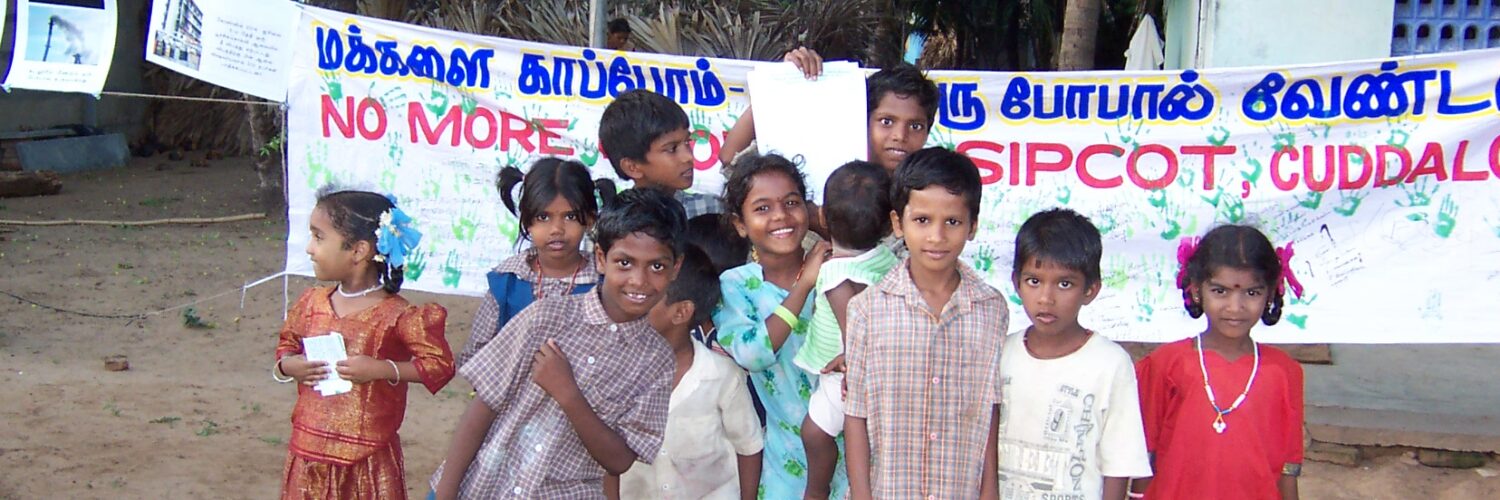G JAGANNATH
News Today
www.newstodaynet.com
Cuddalore, Aug 1, 2005
Cuddalore SIPCOT Industries Association (CSIA) has admitted to excessive presence of two Volatile Organic Compounds (VOCs) Chloroform and Triethylamine in the air according to findings of an air quality study conducted by Shiva Analyticals (India) Limited on behalf of CSIA.
The industry study tested for 21 toxic gases, in addition to standard parameters, in ambient air samples collected between 25 and 28 November, 2004, at 10 locations in and around SIPCOT. The study will be used as base data for carrying out regular monitoring at SIPCOT, K Indra Kumar, secretary, CSIA said.
“The tests confirmed the presence of at least 13 Volatile Organic Compounds (VOCs) in the air out of which two VOCs chloroform and triethylamine are found exceeding in two locations.” The association has asked two companies to bring down the emission level of chloroform and triethylamine in the air, he noted. The industries would bring down the VOC to prescribed limits, if Pollution Control Board sets standards for VOC and Sulphur-based gases, he said.
“In September 2004, the Supreme Court Monitoring Committee instructed the Central Pollution Control Board to develop standards for VOC. The SCMC asked the board use United States Environmental Protection Agency (US EPA) norms until the standards are developed,” M Nizamudeen, member, SIPCOT Area Community Environmental Monitors (SACEM).
Comparing the CSIA’s study report to the USEPA, Nizamudeen, said, levels of chloroform were nearly 20,000 times higher than safe levels prescribed by US EPA Region 6 standards. Acrylonitrile found in the sample on top of Tagros Security-West room exceeded Region 6 levels by a factor of 6008. 1,2-dichloroethane found in the sample from Shasun Chemicals SW corner was 194 times safe levels, and Trichloroethylene levels as far away as Sonnanchavadi exceeded safe levels by a factor of 1237. All four chemicals are known or suspected carcinogens.
Chloroform and acetonitrile were found in six and eight out of 10 samples respectively. Eleven out of 13 chemicals found in the CSIA study are used as raw materials by SIPCOT industries, indicating the escape of these chemicals through fugitive emissions into the air breathed by SIPCOT residents. Six of the 13 chemicals found are potential human carcinogens, and confirmed animal carcinogens.
“The study by SIPCOT industries confirm SIPCOT Area Community Environmental Monitors’s (SACEM) earlier studies that SIPCOT air is not fit to breathe,” Nizamudeen said. In September 2004 and May 2005, SACEM released two reports Gas Trouble I and Gas Trouble II that found at least 24 chemicals including 20 volatile organic compounds (VOC) and four sulphur compounds. SACEM’s study tested for 69 VOCs and 20 sulphur compounds whereas CSIA conducted study only for 20 VOCs and 1 sulphur compound.
Meanwhile, TNPCB has asked Mumbai-based National Environment Engineering Research Institute (NEERI) to conduct a study on air quality in SIPCOT Cuddalore for 35 parameters of VOCs, sources in TNPCB told News Today. The board also asked the Central Pollution Control Board to set standards for toxic VOC and Sulphur based gases, so that result provided by NEERI air quality in Cuddalore can be compared with it, he said. NEERI has already completed preliminary tests last month and full report will be out in one year from August, he added. TNPCB has so far paid Rs 10 lakh of a total of Rs 21 lakh demanded by NEERI for the project, he noted.
